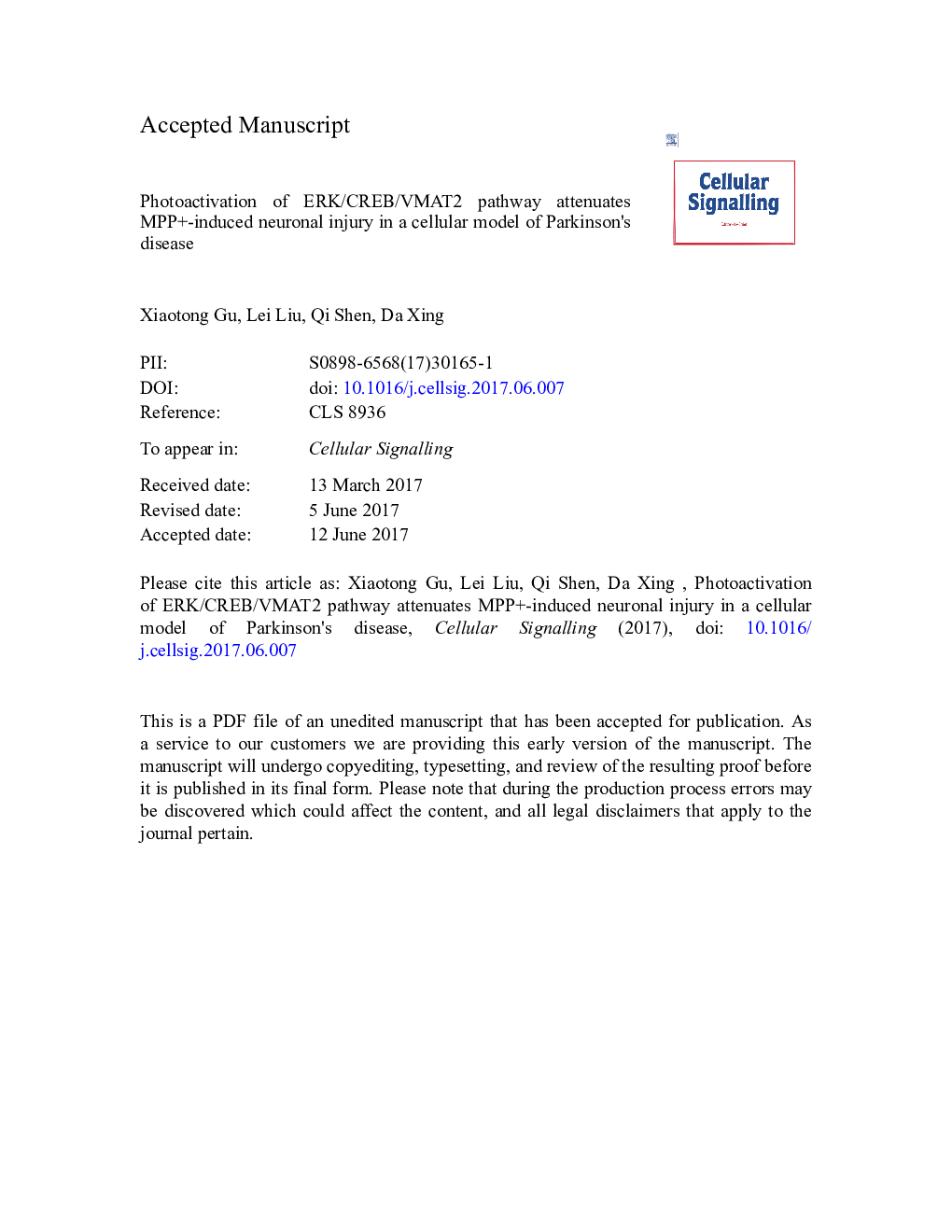| Article ID | Journal | Published Year | Pages | File Type |
|---|---|---|---|---|
| 5509204 | Cellular Signalling | 2017 | 34 Pages |
Abstract
The vesicular monoamine transporter 2 (VMAT2) pumps dopamine from cytoplasm into synaptic vesicles for subsequent release, and the deficits of VMAT2 has been implicated in the dopaminergic neuronal cell loss which is considered as a typical pathological feature of Parkinson's disease (PD). Low-power laser irradiation (LPLI), a potent noninvasive physiotherapy approach, is capable of penetrating into nerve tissue to exert beneficial effects such as promoting nerve regeneration and ATP production. In the present study, we demonstrated that LPLI protects against MPP+-induced neurotoxicity via upregulation of VMAT2 in SH-SY5Y human dopaminergic neuroblastoma cells. The photoactivation of ERK phosphorylated cAMP-response element binding protein (CREB) at Ser133, and thus increased the ability of CREB binding to the promoter region of VMAT2, leading to elevated VMAT2 expression, which contributes to dopamine release and cell survival. Taken together, for the first time to our knowledge, the results showed that LPLI attenuates MPP+-induced neurotoxicity through activation of ERK/CREB/VMAT2 pathway, suggesting that the manipulation of VMAT2 by LPLI may provide a potential therapeutic strategy for PD.
Keywords
LPLiFITCPitx31-methyl-4-phenyl-1, 2, 3, 6-tetrahydropyridineAβVMAT2PKCERK1-methyl-4-phenylpyridiniumDAPIPMSFMPTPNurr1CREB4,6-diamidino-2-phenylindoleMPP+SNpcSp1amyloid-β-peptideParkinson's diseasesubstantia nigra pars compactaPositron emission tomographyDopaminefluorescein isothiocyanatephenylmethylsulfonyl fluorideSpecificity protein 1vesicular monoamine transporter 2PETcAMP-response element binding proteinExtracellular regulated protein kinaseProtein kinase CPropidium iodide
Related Topics
Life Sciences
Biochemistry, Genetics and Molecular Biology
Biochemistry
Authors
Xiaotong Gu, Lei Liu, Qi Shen, Da Xing,
